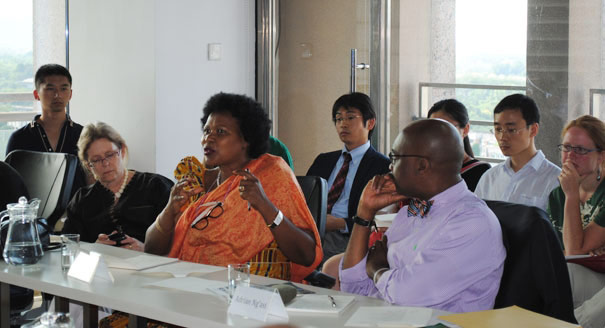Registration
You will receive an email confirming your registration.
Despite ongoing global financial woes, China and countries in the Organization for Economic Co-operation and Development (OECD) continue to provide significant amounts of aid to developing countries. At the same time, these countries continue to improve the design, delivery, and implementation of their development assistance, especially in Africa. The changing global development landscape is driving donors to increase collaboration in the provision of development assistance, particularly in the African region where most aid has been focused.
Carnegie-Tsinghua hosted a panel discussion featuring Erik Solheim, chair of the OECD’s Development Assistance Committee, as well as senior Chinese and international development experts to explore the changing nature of development assistance. Carnegie-Tsinghua’s Tang Xiaoyang moderated.
Future of International Development Aid in Africa
- Africa as an Aid Destination: Africa has long been the primary destination for aid, Solheim said, but the allocation of aid to Africa has generally followed a patron-client system. In such a system, wealthier external nations provide aid conditionally by selecting which development areas to focus on and implementing projects according to that focus. However, Solheim added, recent changes in development aid thought and theory argue that African recipient nations should have greater input into aid distribution.
- Rise of Equal Partnerships: Modibo Traore, assistant director general at the United Nation’s Food and Agricultural Organization, and Joyce Mapunjo, permanent secretary at the Tanzanian Ministry of Industry and Trade, discussed the ongoing shift toward more equal partnerships in African aid. These changes allow recipient nations to establish their own development priorities and select aid programs and initiatives that align with their national development goals.
- Emergence of the African Union: While the majority of aid relationships in Africa remain bilateral and government-sponsored, Adrian Ng’asi, an international economist working with USAID, explained that the influence of multilateralism and the private sector are on the rise. He further noted that the African Union is beginning to play a key role in facilitating negotiations and representing their recipient nations’ development priorities. Additionally, he added, triangular cooperation—in which a traditional donor nation and a developing nation pledge aid to another developing nation—is beginning to grow in effectiveness and popularity.
New Era for Dynamic Donor Collaboration
China’s increasing economic power has fueled its increased level of aid, especially to Africa. However, OECD countries remain important aid donors to the region.
- China’s Growing Role: Mao Xiaojing, deputy director at the Chinese Academy of International Trade and Economic Cooperation, explained that Chinese aid to African nations, which began in 1956, has grown tremendously in recent decades. This is particularly the case for agriculture and infrastructure aid. She stressed the importance recently attached to capacity-building efforts and technical and policy instruction. In addition, while China is historically accustomed to bilateral relationships, engagement and cooperation with the African Union is increasing, she added.
- OECD Aid and Multilateralism: Traditional OECD donor nations like the United States and Japan remain important aid partners, Ng’asi noted. This aid has contributed to remarkable successes in combating HIV/AIDS and malaria. Naohiro Kitano, director general at the Japan International Cooperation Agency, highlighted how Japan’s Center for Agricultural and Rural Development was successful in doubling rice production in sub-Saharan Africa. As China’s role evolves, Kitano and Ng’asi stressed that Japan might move toward triangular cooperation, particularly with China, as evidenced by joint Sino-Japanese development efforts in major growth corridors in Africa, such as the Beira Corridor of Mozambique and the Southern Agricultural Growth Corridor of Tanzania.
- Compromising on Conditionality: Solheim noted several areas where there is room for future agreement among donor nations—specifically between OECD member states and China. In particular, Solheim stressed the importance of common ground on conditionality, claiming that while overly-strict conditions can be intrusive and ineffective, conditions that are too lax should likewise be avoided.
Discussants included: Adrian Ng’asi, Modibo Traore, Naohiro Kitano, Joyce Mapunjo, Mao Xiaojing, Dawit Alemu
